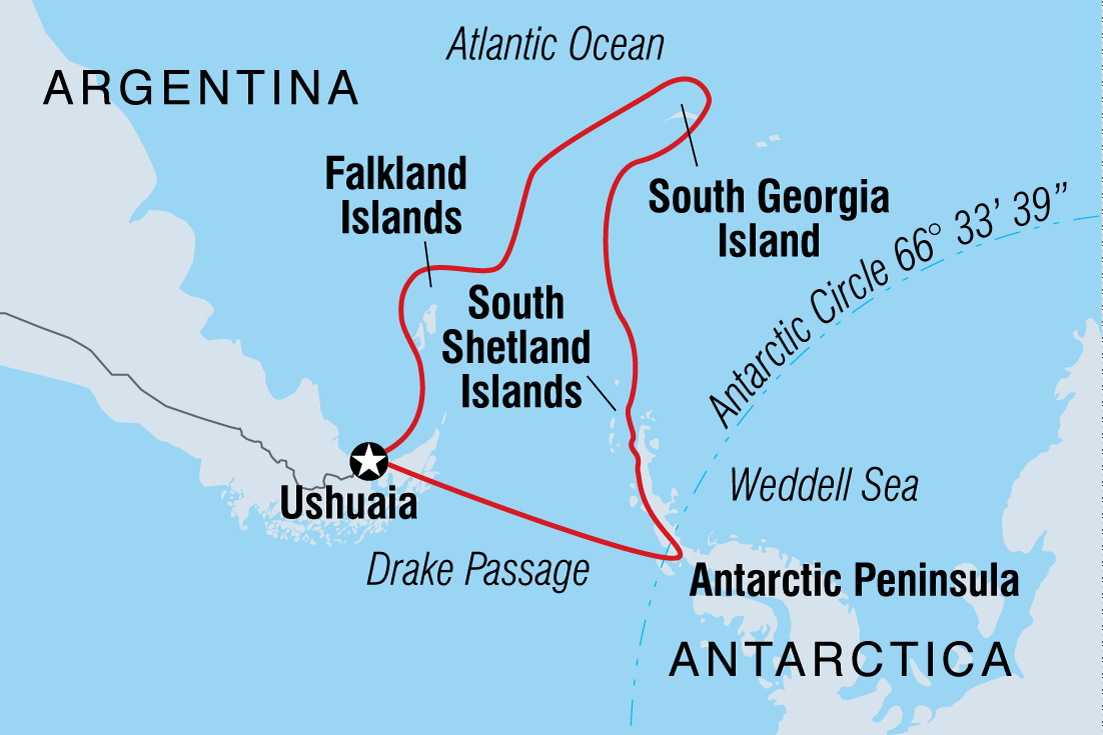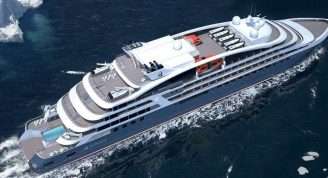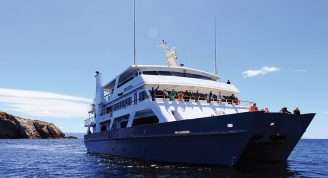Description
If you desire to ‘do it all’ on your Antarctic adventure, then this is the voyage for you. Not only will you cross the Antarctic Circle and travel further south than traditional Antarctic cruises, you’ll also visit the wildlife playgrounds of the Falkland Islands and South Georgia. This journey is for anyone who appreciates a wide variety of landscapes, unprecedented wildlife viewing opportunities and a decent mix of historic landing sites.
Trip Name
Crossing the Circle via Falklands & South Georgia from Ushuaia
Last Updated
2021-09-25
Days
23
Capacity
189
Highlights
- Journey to the end of the civilised world and your embarkation point at Ushuaia
- South Georgia Island is incredibly rich in rare wildlife and history. See over 30 species of birds, including four penguin species, and visit the grave of the great explorer, Sir Ernest Shackleton
- Encounter whales, seals and penguins on regular Zodiac excursions along the plunging coastline of the Antarctic Peninsula
- On-board lectures by polar experts provide great insight into the unique history, geology and wildlife of the region
- Few people ever get the opportunity to set foot on the Great White Continent, but you'll be one of them
- A diversity of possible landing sites and activities allows you to see the spectacular Antarctic Peninsula from multiple perspectives
- This all-encompassing trip includes everything you need for peace of mind on your journey, such as pre-expedition hotel accommodation, transfers to and from your ship, full meals on-board, around the clock tea and coffee, waterproof expedition boots for shore landings (on loan) and emergency evacuation insurance.






























